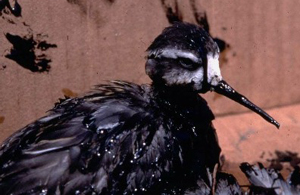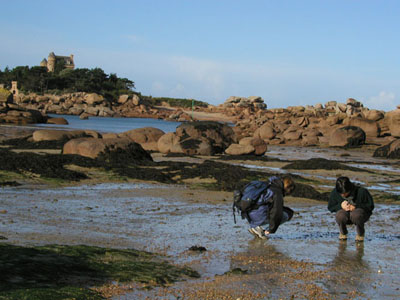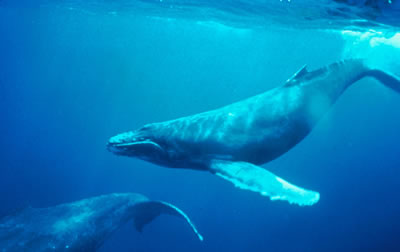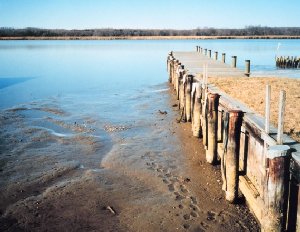
US Fish and Wildlife Service
Resources for Teaching About Oil Spills
Marine and coastal ecosystems are greatly affected by oil. As soon as oil has spilled into the ocean it starts to spread out over the sea surface. At first it is one single slick of oil, covering large areas of the sea surface quickly. Wind and waves can cause the slick to break into several parts. Some of the oil sinks to the ocean floor, while most of it stays at the surface. If the oil on the surface has burned, the residue will often be dense enough to sink to the bottom. Some ocean microbes can break apart certain types of oil. After a while, the oil floating in the ocean starts to break down forming balls of tar which wash up on coastlines.
Oil is a danger to marine life - including plants, animals, algae, and many small microbes. Seabirds are in danger of becoming covered with spilled oil since the slick is at the surface of the ocean where they live. Oil-filled feathers can make birds unable to fly and, if oil covers their downy feathers, the birds will get cold. Marine mammals like dolphins, seals, and whales are also in danger of becoming covered with oil since to take a breath of air they must come to the ocean surface. Many other animals are affected by oil spills too such as turtles, fish, clams and oysters. Oil can be toxic to animals if they inhale or eat it.
The resources listed below include content and classroom activities for educators who wish to address oil spills and the effects of oil spills with students.
- Bird Baths: Cleaning Up Wildlife After Oil Spills, an activity from National Geographic
- Exploring Effects of Oil Spills on Birds, an activity from the Center for Global Environmental Education
- Liquid Density and Oil Spills, an activity from National Geographic
- What Happens When an Oil Spill Occurs? a resource from Teachers' Domain
- Pollution Solution, from the Smithsonian Institution
- Oil Spill Activities, from the Gulf of Maine Aquarium
- Oil Spill: Exxon Valdez, 1989, a NOVA video from Teachers' Domain
- Oil Spill Cleanup Middle School Experiment, an activity from the US EPA
- Responding to Oil Spills, resources from NOAA's National Ocean Service
- Global Marine Oil Pollution Information Gateway, resources from UNEP GPA
- Kids' Pages on Oil in the Sea, resources from UNEP GPA
- Mixing Oil and Water, The Why Files













